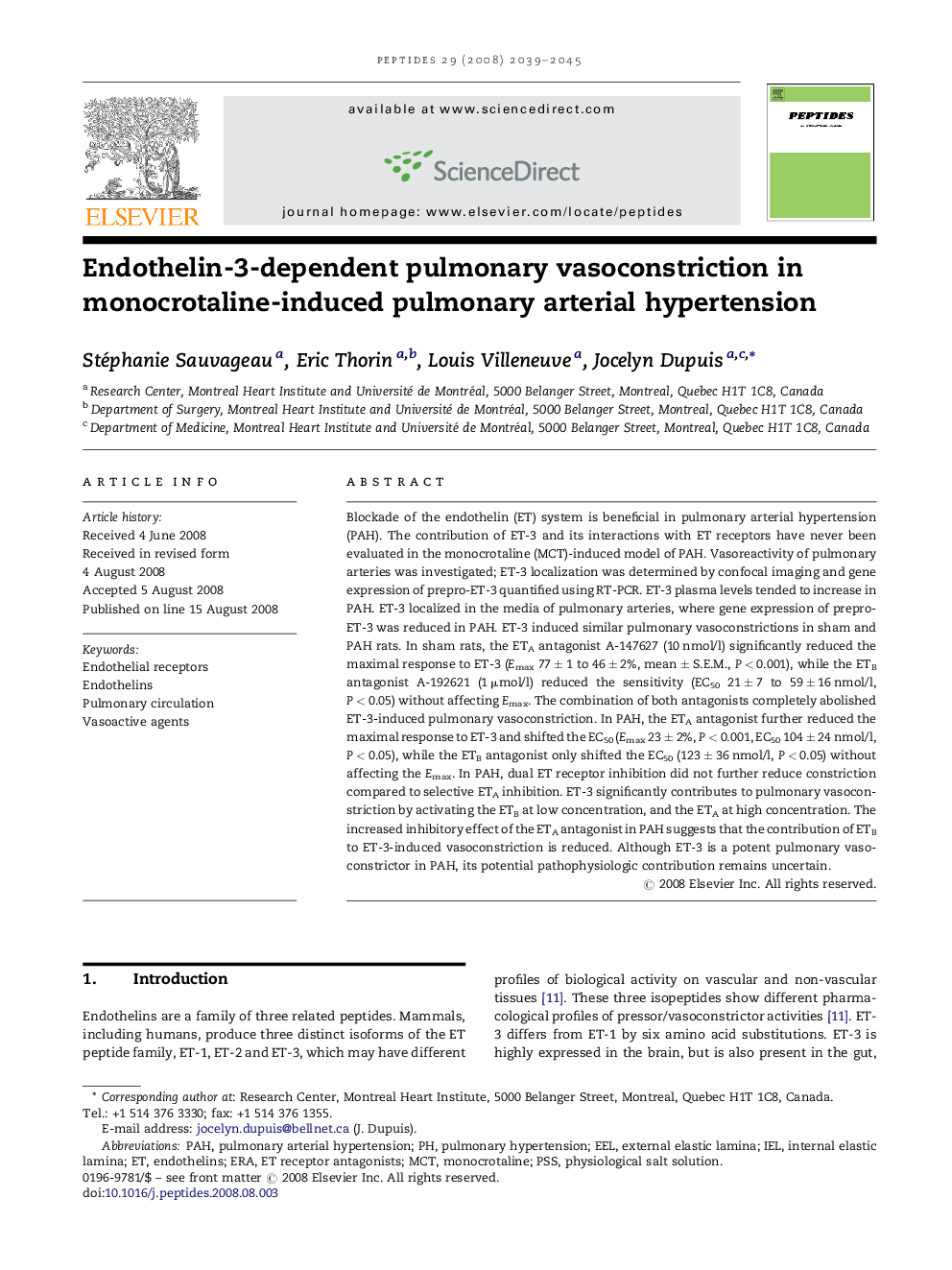| Article ID | Journal | Published Year | Pages | File Type |
|---|---|---|---|---|
| 2007492 | Peptides | 2008 | 7 Pages |
Blockade of the endothelin (ET) system is beneficial in pulmonary arterial hypertension (PAH). The contribution of ET-3 and its interactions with ET receptors have never been evaluated in the monocrotaline (MCT)-induced model of PAH. Vasoreactivity of pulmonary arteries was investigated; ET-3 localization was determined by confocal imaging and gene expression of prepro-ET-3 quantified using RT-PCR. ET-3 plasma levels tended to increase in PAH. ET-3 localized in the media of pulmonary arteries, where gene expression of prepro-ET-3 was reduced in PAH. ET-3 induced similar pulmonary vasoconstrictions in sham and PAH rats. In sham rats, the ETA antagonist A-147627 (10 nmol/l) significantly reduced the maximal response to ET-3 (Emax 77 ± 1 to 46 ± 2%, mean ± S.E.M., P < 0.001), while the ETB antagonist A-192621 (1 μmol/l) reduced the sensitivity (EC50 21 ± 7 to 59 ± 16 nmol/l, P < 0.05) without affecting Emax. The combination of both antagonists completely abolished ET-3-induced pulmonary vasoconstriction. In PAH, the ETA antagonist further reduced the maximal response to ET-3 and shifted the EC50 (Emax 23 ± 2%, P < 0.001, EC50 104 ± 24 nmol/l, P < 0.05), while the ETB antagonist only shifted the EC50 (123 ± 36 nmol/l, P < 0.05) without affecting the Emax. In PAH, dual ET receptor inhibition did not further reduce constriction compared to selective ETA inhibition. ET-3 significantly contributes to pulmonary vasoconstriction by activating the ETB at low concentration, and the ETA at high concentration. The increased inhibitory effect of the ETA antagonist in PAH suggests that the contribution of ETB to ET-3-induced vasoconstriction is reduced. Although ET-3 is a potent pulmonary vasoconstrictor in PAH, its potential pathophysiologic contribution remains uncertain.
